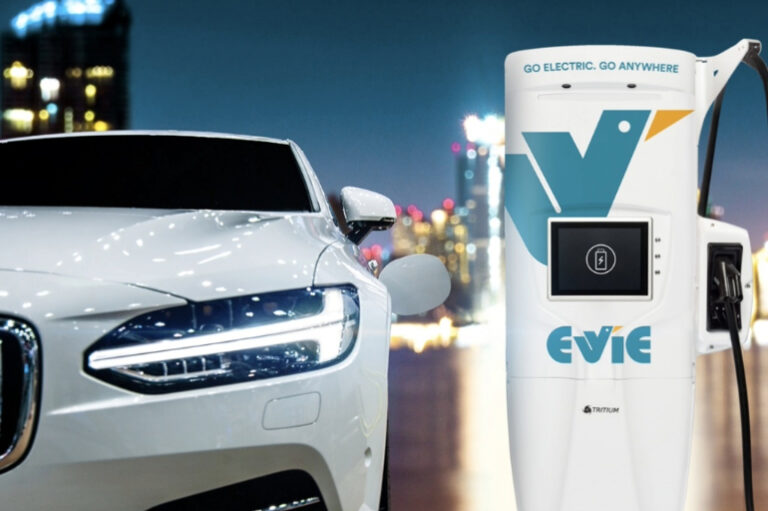Australian-owned green energy charging provider, Evie Networks, is continuing its rapid expansion across the country with 1000 chargers planned by year’s end.
Fleet EV News sat down with Evie Networks CEO, Chris Mills, to discuss the company’s future plans and unique approach to sustainable charging solutions.
Evie Networks is Australia’s leading DC charging provider, but its point of difference is that its fast chargers are powered by 100% renewable energy. But as Mr Mills explained, the company is also very selective about where it puts its chargers.
“For us, site selection has always been driven by three criteria and we’ve been quite diligent in making sure they meet those criteria,” he said.
“They revolve around ease of access, feeling safe and secure no matter what time of day or night you’re charging, and you’ve got to have something to do because you’re going to be there for 20 minutes at least.
“For example, I have 232 sites operating 558 bays today, but I probably could have had double that number if I was prepared to accept going around the back of the shopping centre with the dumpsters.”
The proof is in the pudding, or rather, the utilisation levels, Mr Mills said, proving the premium placement of Evie Networks charging bays is a winning formula.
“I think our utilisation levels very much reflect that we got it right,” he said.
“In our metropolitan areas, our utilisation levels track at 16% – so for four hours a day, every single charger in our network is being used.
“Our strong chargers, you know, our highly used chargers, they’re at 40% utilisation – so 10 hours a day, everyday they’re being used.
“We’re at just over 10% nationwide, including our regional and highway sites, so that’s as good as people are seeing in Europe – and they’re five years ahead of us.”
By the end of 2024, Evie Networks will have around 1000 charging bays operational around the country, Mr Mills confirmed, with the company setting the pace as it leads the infrastructure charge.
“So right now we’re sitting at 232 sites, which are operational, with 558 bays, and our plan is to get to 330 sites and just over 1000 bays by the end of the calendar year,” he said.
“Of that, probably half of those sites are acquired, so it’s about getting power to those sites – because power is a big deal for us.
“I mean, last year we built more sites than anybody else, in fact, we built more sites than everybody else combined.”
Not only is the company expanding its total number of sites, it is also upgrading existing sites if they are popular amongst users.
“We’re at the point now where not only are we building new sites, but we are expanding existing sites,” Mr Mills said.
“For our capital program, in the assessment of the new construction work that we undertake, there is just as much an assessment of, ‘is it better for us to expand a site than build a new one’.”
While other charging providers have struggled to turn a profit, whether operating a subscriber or one-off payment model, and with manufacturers like Tritium closing up shop in Australia, Mr Mills said the unique Evie Networks model is proving successful.
“One of the interesting things not many people know, is that we are tracking towards hitting positive operating cash flow in December this year or early next year,” he said.
“If we can achieve that, we’ll probably be doing it three to five years before anyone else.”
Mr Mills offered his take on the recent Tesla drama, with the US company announcing it would abandon future Supercharger developments, before backflipping to suggest it would continue developing the network after all – but at a slower rate. The controversy actually helped charging providers like Evie Networks.
“I think one of the opportunities that it certainly does open up is that there will be many Tesla drivers who have never looked outside that ecosystem, but will now have to poke their head above the parapet,” he said.
“Tesla drivers will continue to use the Tesla chargers they know of, but what they’ll do is instead of being directed to a Tesla charger, from the Tesla screen on their in their car, what they’ll do is they’ll start to seek other ways of finding the other charging stations like Plugshare and the like.
“You can, for example, find our charges on their system – but you’ve got to look for them.”






